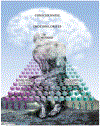Brain Mechanisms of Conscious Awareness: Detect, Pulse, Switch, and Wave
- PMID: 34632846
- PMCID: PMC8995398
- DOI: 10.1177/10738584211049378
Brain Mechanisms of Conscious Awareness: Detect, Pulse, Switch, and Wave
Abstract
Consciousness is a fascinating field of neuroscience research where questions often outnumber the answers. We advocate an open and optimistic approach where converging mechanisms in neuroscience may eventually provide a satisfactory understanding of consciousness. We first review several characteristics of conscious neural activity, including the involvement of dedicated systems for content and levels of consciousness, the distinction and overlap of mechanisms contributing to conscious states and conscious awareness of transient events, nonlinear transitions and involvement of large-scale networks, and finally the temporal nexus where conscious awareness of discrete events occurs when mechanisms of attention and memory meet. These considerations and recent new experimental findings lead us to propose an inclusive hypothesis involving four phases initiated shortly after an external sensory stimulus: (1) Detect-primary and higher cortical and subcortical circuits detect the stimulus and select it for conscious perception. (2) Pulse-a transient and massive neuromodulatory surge in subcortical-cortical arousal and salience networks amplifies signals enabling conscious perception to proceed. (3) Switch-networks that may interfere with conscious processing are switched off. (4) Wave-sequential processing through hierarchical lower to higher cortical regions produces a fully formed percept, encoded in frontoparietal working memory and medial temporal episodic memory systems for subsequent report of experience. The framework hypothesized here is intended to be nonexclusive and encourages the addition of other mechanisms with further progress. Ultimately, just as many mechanisms in biology together distinguish living from nonliving things, many mechanisms in neuroscience synergistically may separate conscious from nonconscious neural activity.
Keywords: attention; consciousness; mechanisms; memory; subcortical; thalamus.
Conflict of interest statement
Declaration of Conflicting Interests
The author declared no potential conflicts of interest with respect to the research, authorship, and/or publication of this article.
Figures




References
-
- Aru J, Bachmann T. 2017. Expectation creates something out of nothing: the role of attention in iconic memory reconsidered. Conscious Cogn 53:203–10. - PubMed
-
- Aru J, Bachmann T, Singer W, Melloni L. 2012. Distilling the neural correlates of consciousness. Neurosci Biobehav Rev 36:737–46. - PubMed
-
- Baars BJ. 2005. Global workspace theory of consciousness: toward a cognitive neuroscience of human experience. Prog Brain Res 150:45–53. - PubMed
-
- Barton JJ. 2011. Disorders of higher visual processing. Handb Clin Neurol 102:223–61. - PubMed
Publication types
MeSH terms
Grants and funding
LinkOut - more resources
Full Text Sources

